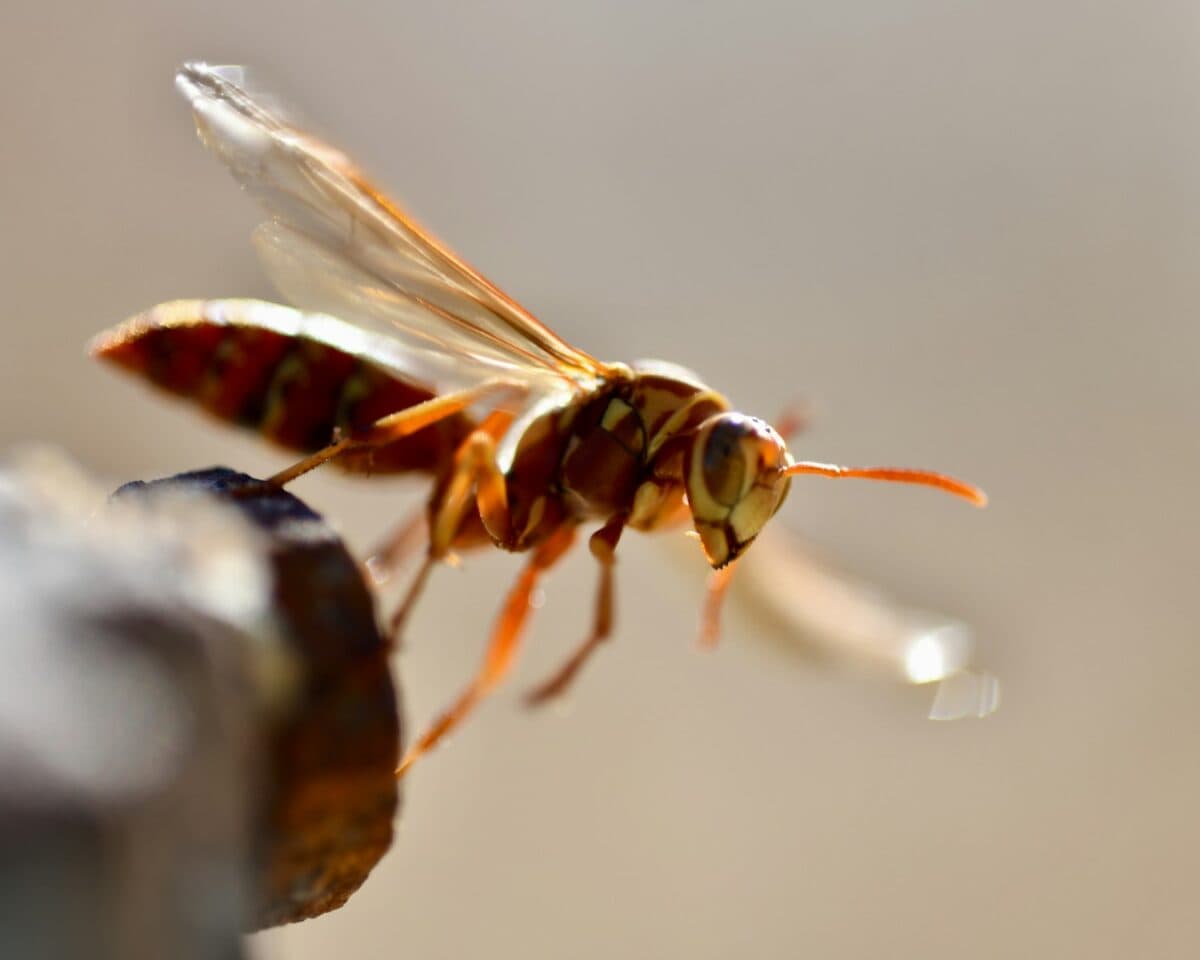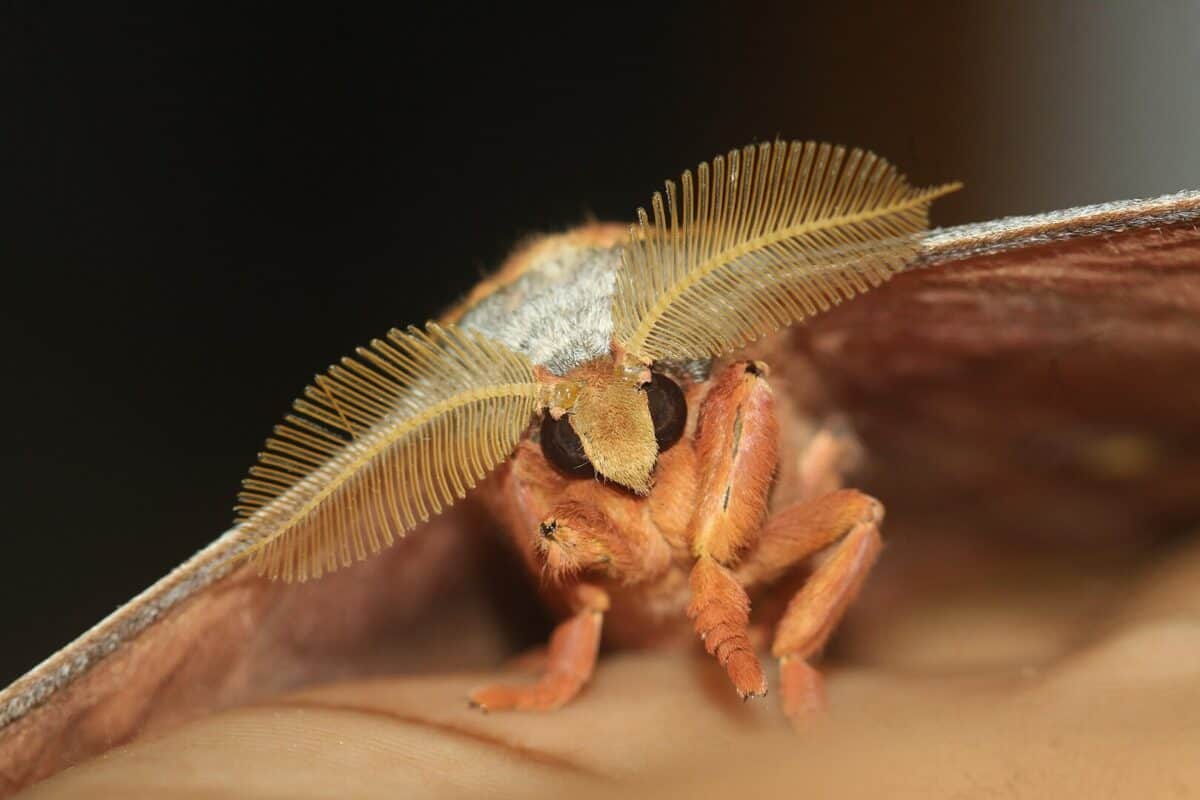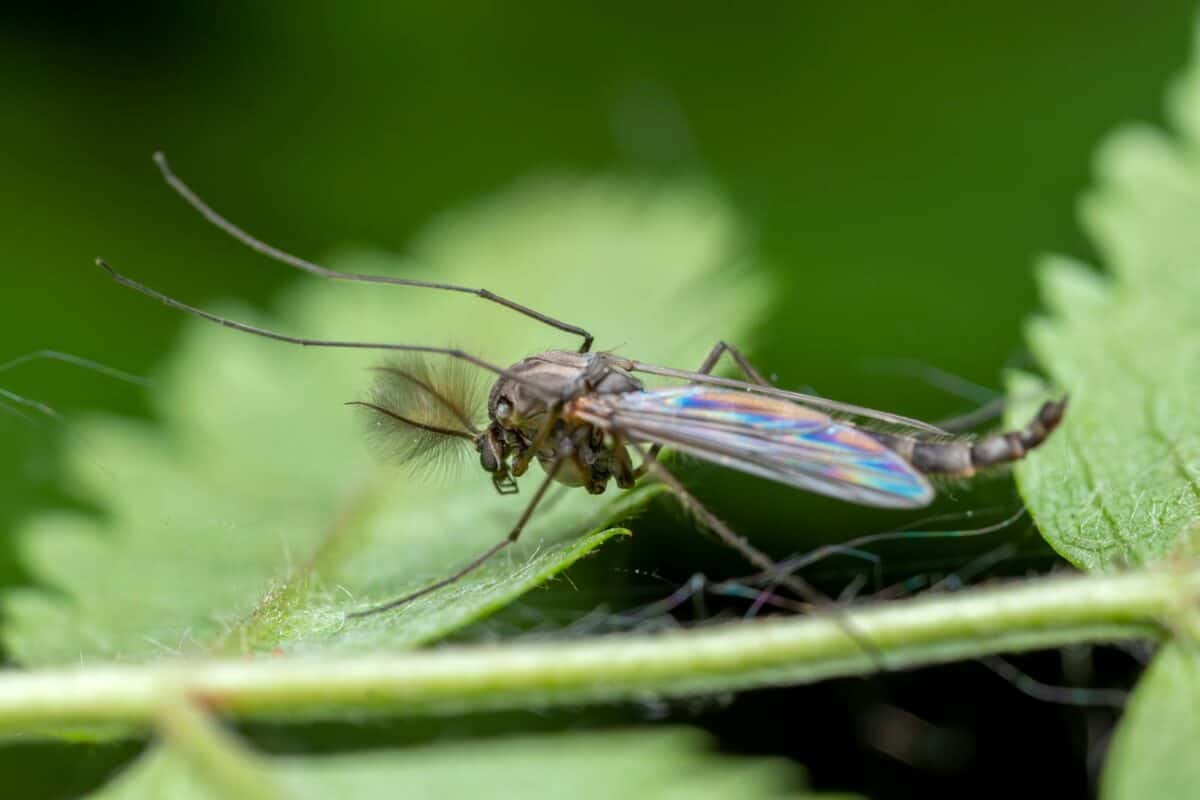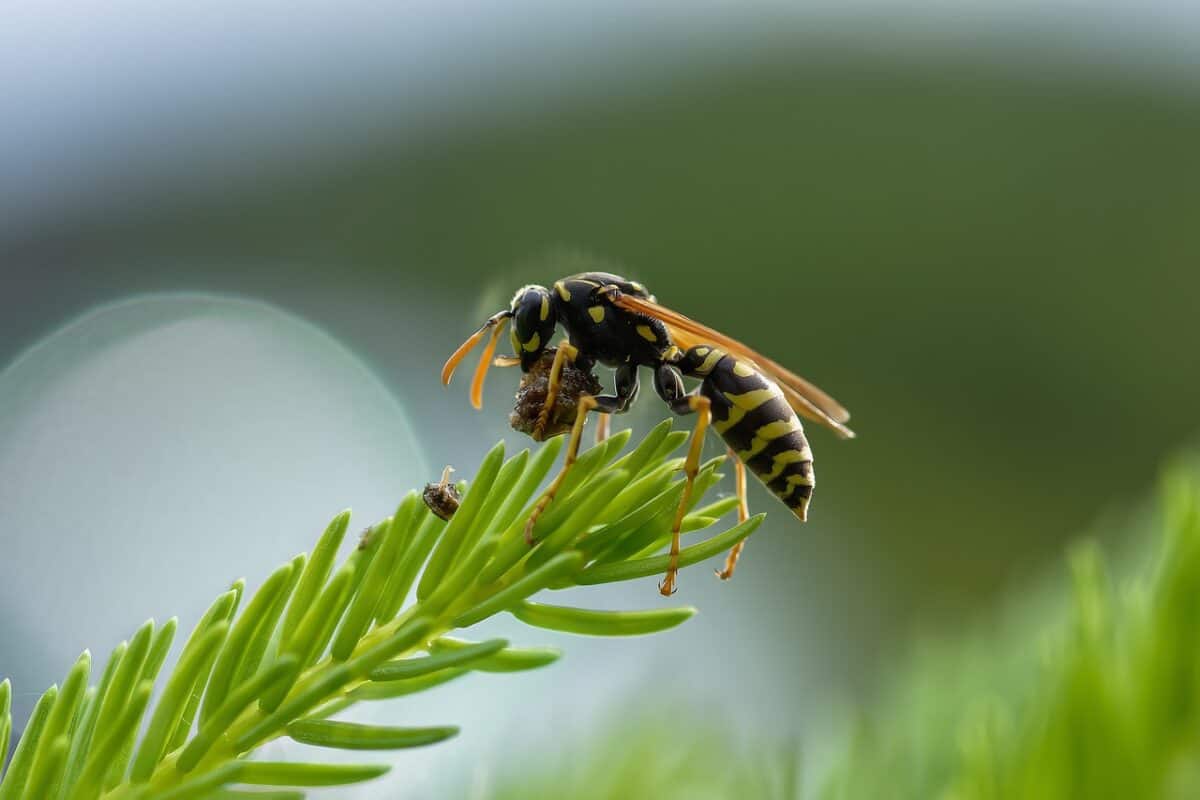As temperatures rise across the United States, so does the activity of various insect species. The warm, humid conditions of summer create the perfect breeding environment for many insects, occasionally leading to population explosions that can result in swarms. While insect swarms are natural occurrences that often serve ecological purposes, they can cause significant concerns for agriculture, public health, and everyday comfort. From agricultural pests to disease vectors, understanding which insects might appear in large numbers this summer can help communities prepare and respond appropriately. Here’s a look at twelve insect species that experts are monitoring for potential swarming activity across various regions of the United States this summer.
Periodical Cicadas (Brood XIX and XIII)

This summer, parts of the Midwest and Southeast will witness one of nature’s most remarkable synchronized events as billions of periodical cicadas emerge from underground. 2024 marks a rare dual emergence of both Brood XIX (the Great Southern Brood) and Brood XIII (the Northern Illinois Brood), creating what entomologists call a “dual brood emergence.” These insects have spent the last 13 or 17 years developing underground, feeding on tree root sap, and will emerge when soil temperatures reach approximately 64°F. Although their buzzing chorus can reach up to 100 decibels (comparable to a motorcycle engine), cicadas pose no direct harm to humans or pets. They don’t bite, sting, or carry diseases. However, their egg-laying behavior can damage young trees, and their sheer numbers can overwhelm outdoor activities in affected areas spanning from Georgia and Alabama northward through Illinois and Iowa.
Mormon Crickets (Anabrus simplex)

Despite their name, Mormon crickets aren’t true crickets but large flightless katydids that can form massive swarms in western states, particularly Nevada, Utah, Idaho, and Oregon. These insects earned their name from their devastation of Mormon settlers’ crops in 1848. When population densities increase, Mormon crickets undergo a remarkable transformation from solitary insects to gregarious marching bands that can stretch several miles long and a mile across. These swarms move up to a mile per day, devouring vegetation including native plants, crops, and even each other if food becomes scarce. Climate conditions in recent years have been particularly favorable for Mormon cricket population growth, with some regions of the West experiencing their worst outbreaks in decades. Beyond crop damage, these insects can create hazardous driving conditions when crushed in large numbers on roadways.
Asian Giant Hornets (Vespa mandarinia)

Commonly known as “murder hornets” in media reports, Asian giant hornets have generated significant concern since their first detection in Washington State in 2019. Native to East Asia, these hornets are the world’s largest, measuring up to 2 inches in length with a wingspan of approximately 3 inches. While they don’t typically form traditional swarms, they can aggregate in concerning numbers around their nests, which are often built underground or in hollow trees. The primary concern surrounding these hornets is their potential impact on honeybee populations—a single hornet can decapitate dozens of honeybees per minute in what’s called a “slaughter phase.” Monitoring programs across the Pacific Northwest remain vigilant for signs of established populations, and while eradication efforts have been successful against detected nests so far, entomologists continue watching for potential spread this summer, particularly in Washington, Oregon, and British Columbia.
Desert Locusts (Schistocerca gregaria)

While desert locusts have historically been more associated with Africa and the Middle East, changing climate patterns and global interconnectedness have raised concerns about potential introduction to southwestern states. These insects undergo remarkable physical and behavioral changes when population densities increase, transforming from solitary grasshoppers to highly gregarious swarms that can cover hundreds of square miles. A single square kilometer of locusts can contain up to 80 million individuals, collectively consuming food equivalent to what would feed 35,000 people daily. Though established populations aren’t currently present in the United States, agricultural authorities remain vigilant for any signs of introduction, particularly in states like Arizona, New Mexico, and Texas where climate conditions could potentially support locust development. International monitoring networks track global locust movements to provide early warning systems for potential spread to new regions.
Spotted Lanternflies (Lycorma delicatula)

First detected in Pennsylvania in 2014, spotted lanternflies have rapidly expanded their range across the eastern United States, with significant populations now established in at least fourteen states. These colorful but destructive planthopper insects don’t form traditional swarms but can aggregate in extremely high densities on host plants, particularly the invasive tree of heaven (Ailanthus altissima), grapevines, and fruit trees. Adult spotted lanternflies, with their distinctive spotted wings and bright red underwings, become most visible from July through November. They feed by piercing plant tissues and consuming sap, weakening plants and excreting a sugary substance called honeydew that promotes the growth of sooty mold. Agricultural impacts have been severe in affected regions, with vineyards, orchards, and timber industries reporting millions in damages. This summer, experts predict continued spread with particularly dense populations in Pennsylvania, New Jersey, New York, Delaware, Maryland, Virginia, and Connecticut.
Western Tussock Moths (Orgyia vetusta)

Parts of the western United States, particularly California, Oregon, and Washington, may experience significant outbreaks of western tussock moths this summer. These native insects undergo cyclical population explosions approximately every 7-10 years, creating dramatic defoliation events across forested areas and urban landscapes. The caterpillars, recognizable by their distinctive tufts of hair and colorful markings, can completely strip trees of foliage when present in high numbers. While trees typically recover from defoliation, repeated outbreaks can weaken them and increase vulnerability to other stressors. Beyond ecological impacts, these caterpillars pose a direct nuisance to humans—their urticating (irritating) hairs can cause skin rashes, respiratory issues, and eye irritation upon contact. In urban areas, they may become particularly problematic as they descend from trees on silken threads, creating what residents sometimes describe as “caterpillar rain” during peak outbreaks.
Midges (Chironomidae family)

Residents around the Great Lakes, Florida’s lake regions, and other water-rich environments across the country may witness impressive midge swarms this summer. These non-biting, mosquito-like insects emerge in synchronized hatches from aquatic environments, sometimes in such massive numbers that they appear as clouds or smoke on weather radar. While midges don’t bite humans or spread disease, their sheer abundance can create significant nuisance issues. They’re attracted to lights, often covering walls, windows, and vehicles in affected areas. In extreme cases, accumulations of dead midges can create slippery road conditions and even respiratory irritation. Midge swarms typically last just a few days but may occur in successive waves throughout the warmer months. Some communities around the Great Lakes have historically reported midge densities so extreme that snow shovels were needed to clear sidewalks and entrances to businesses, though such dramatic accumulations are relatively rare.
Africanized Honey Bees (Apis mellifera scutellata hybrid)

Commonly known as “killer bees” due to their aggressive defensive behavior, Africanized honey bees continue their gradual northward expansion through the southern United States. Currently established in Texas, New Mexico, Arizona, Nevada, California, and parts of Florida, these bees are a hybrid resulting from the interbreeding of European honey bees with African honey bee subspecies. While they don’t form traditional seasonal swarms different from European honey bees, their defensive behavior sets them apart—they respond more quickly to disturbances, pursue perceived threats over greater distances, and attack in greater numbers. Warmer summer temperatures facilitate their activity and potential for expansion into new territories. Despite their intimidating reputation, Africanized honey bees produce honey and pollinate plants just like their European counterparts. However, their aggressive nature poses significant concerns for beekeepers, outdoor workers, and the general public in affected regions.
Formosan Subterranean Termites (Coptotermes formosanus)

Each spring and early summer, residents across the Gulf Coast witness the dramatic synchronized mating flights of Formosan subterranean termites. These non-native insects, considered among the most destructive termite species worldwide, create massive airborne swarms around dusk, typically after warm rainy days. During these nuptial flights, millions of winged reproductive termites (alates) emerge from colonies simultaneously in search of mates. The swarms are so dense in heavily infested areas like New Orleans that they can disrupt outdoor activities and require streetlights to be turned off to avoid attracting the insects. While the flying termites themselves are short-lived and relatively harmless, each mated pair can potentially establish a new colony capable of containing several million individuals. Once established, these colonies can cause severe structural damage, consuming wood at an alarming rate and potentially compromising building integrity. Climate change has facilitated their northward expansion beyond the traditional Gulf Coast range.
Mayflies (Ephemeroptera order)

Communities surrounding the Great Lakes, Mississippi River, and other major waterways often experience spectacular mayfly emergences during summer months. These aquatic insects spend most of their life as nymphs underwater before emerging synchronously as adults in enormous numbers—a phenomenon that serves as a positive indicator of water quality. Some emergences are so massive they appear on weather radar and can create snow-like accumulations several inches deep on roads and structures. Adult mayflies live extremely brief lives—typically just 24-48 hours—focused entirely on reproduction, as they lack functional mouths and cannot feed. While these insects pose no direct harm to humans, their sheer numbers can create hazardous driving conditions as their bodies make roads slippery and reduce visibility. Communities in Minnesota, Wisconsin, Michigan, Ohio, and along the Mississippi River corridor prepare annually for these emergences by adjusting lighting (which attracts the insects) and deploying specialized cleanup equipment.
Mosquitoes (Culicidae family)

Perhaps no insect creates more consistent summer nuisance across the United States than mosquitoes, with particular concern this year for above-average population densities in several regions. Extended periods of spring rainfall, followed by summer heat, create ideal breeding conditions for these disease-vectoring insects. States experiencing flooding events face heightened risk of explosive mosquito populations in subsequent weeks as standing water provides abundant breeding habitat. The Gulf Coast, Florida, and parts of the Midwest and Northeast are predicted to experience particularly high mosquito activity this summer based on early-season monitoring and climate projections. Beyond their irritating bites, mosquitoes in the U.S. can transmit serious diseases including West Nile virus, Eastern equine encephalitis, and, in southern regions, dengue and Zika virus. Public health officials monitor mosquito populations through surveillance programs, deploying prevention strategies that include larvicide application in standing water and public education campaigns.
Fall Armyworms (Spodoptera frugiperda)

Despite their name suggesting autumn activity, fall armyworms begin their destructive march across U.S. agricultural regions much earlier, with population buildups becoming significant by midsummer. These caterpillars earned their military-inspired name from their behavior of moving en masse across landscapes, consuming virtually all vegetation in their path. Native to tropical and subtropical regions of the Americas, these insects cannot survive freezing temperatures but recolonize northern states each year through successive generations migrating northward from overwintering populations in southern Texas and Florida. A single female moth can lay up to 2,000 eggs, contributing to their rapid population growth. Particularly concerning is their increasing resistance to conventional insecticides and genetically modified crops designed to control them. Climate change has expanded their potential range and lengthened their active season, with agricultural experts anticipating potential outbreaks across the Southeast, Midwest, and increasingly into northern states this summer, potentially affecting corn, soybean, cotton, and turf grass industries.
Conclusion: Preparing for Insect Swarms What Americans Should Know

Understanding which insect species might swarm this summer provides valuable preparation time for communities, farmers, and individuals across the United States. While many swarming insects play important ecological roles—cicadas add nutrients to soil, mayflies provide fish food, and even pest species serve as food for birds and other wildlife—their unprecedented numbers can create genuine challenges requiring adaptive responses. For homeowners, preventative measures include sealing entry points in buildings, reducing outdoor lighting during peak emergence periods, and eliminating standing water that serves as mosquito breeding habitat. Agricultural producers should stay connected with extension services for early warning of approaching pest populations and integrated pest management recommendations. Public health departments will maintain mosquito surveillance programs and provide community updates on disease risk. As our climate continues changing, insect population dynamics will likely continue shifting as well, potentially bringing new swarming species into regions where they were previously uncommon, making ongoing research and monitoring essential components of our collective response to these fascinating but sometimes challenging natural phenomena.
- 12 Insect Species That Could Swarm the U.S. This Summer - August 12, 2025
- 13 Ocean Animals With Amazing Hidden Superpowers - August 12, 2025
- 14 Snakes Found in the U.S. That Are not as Scary as They Look - August 12, 2025

